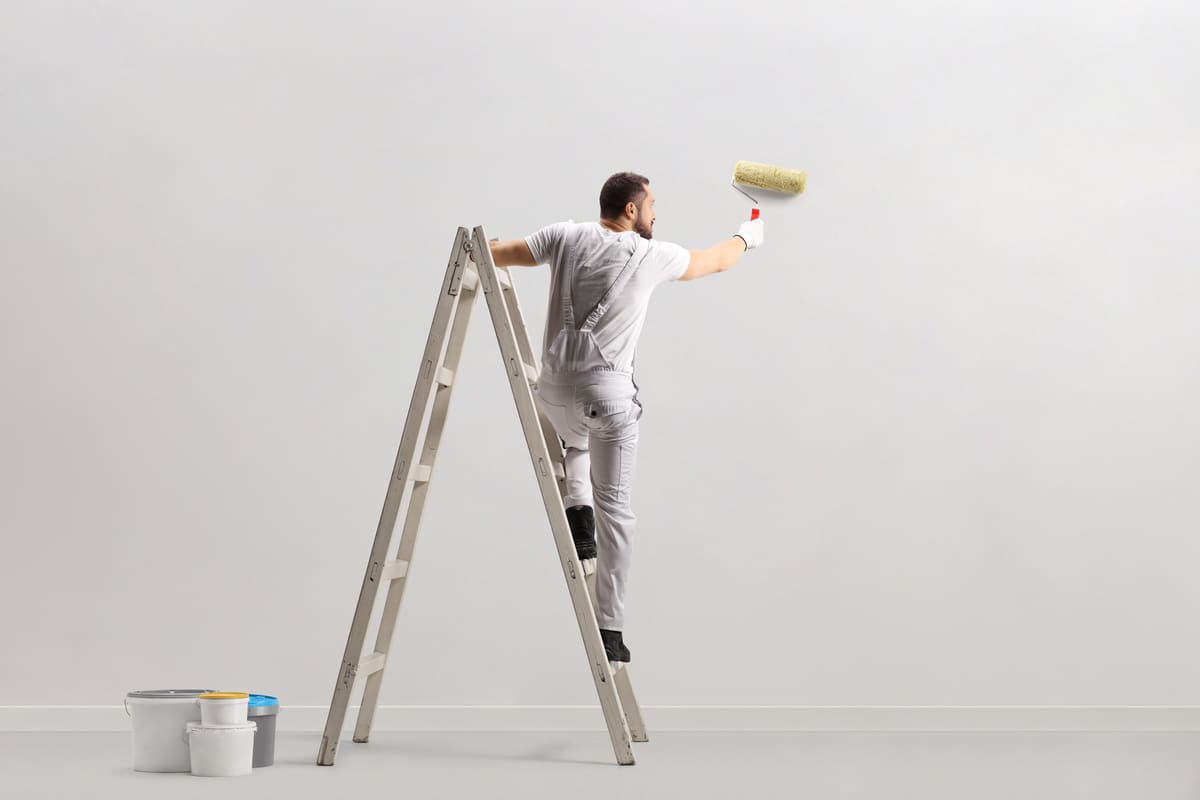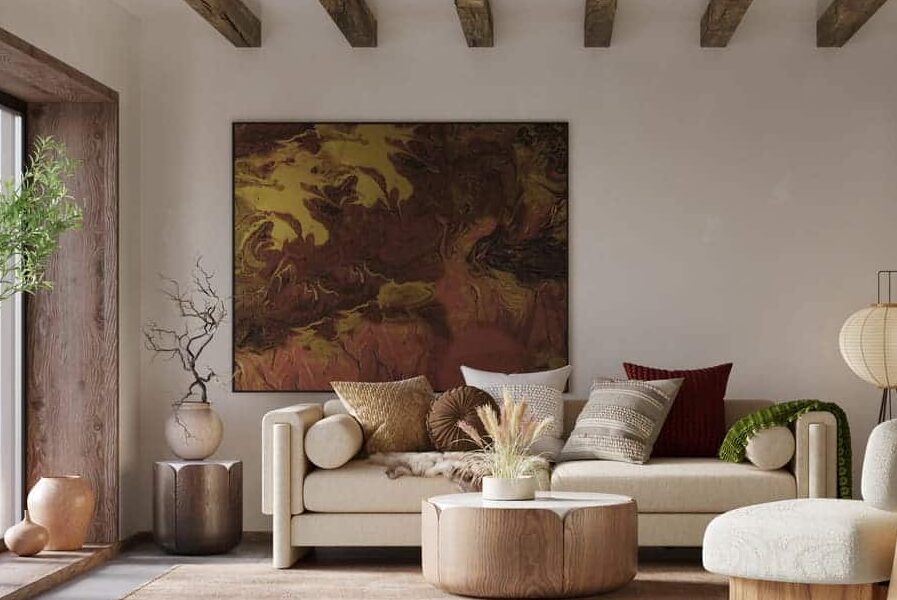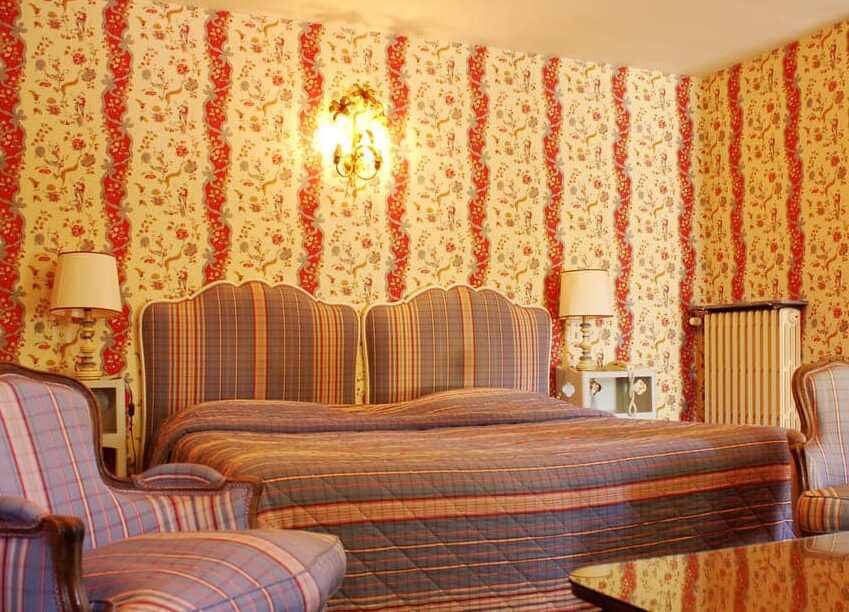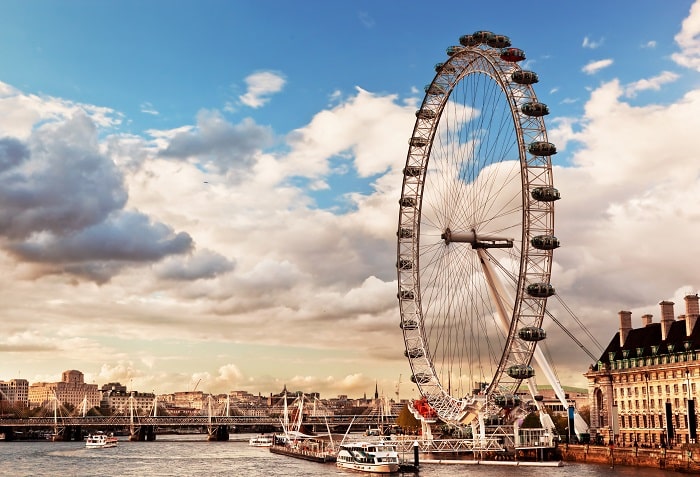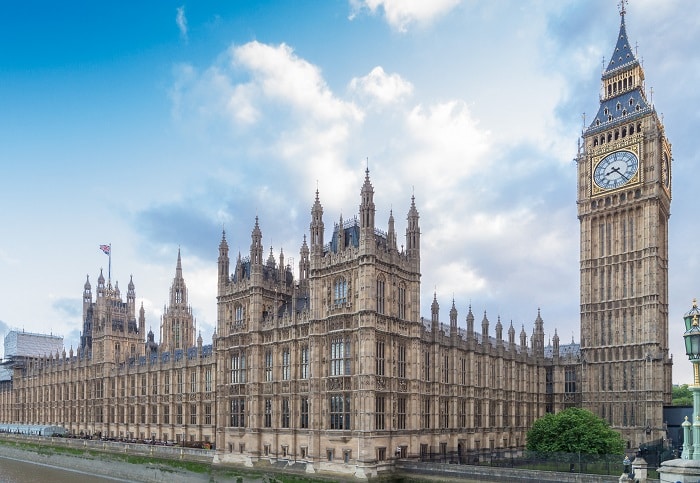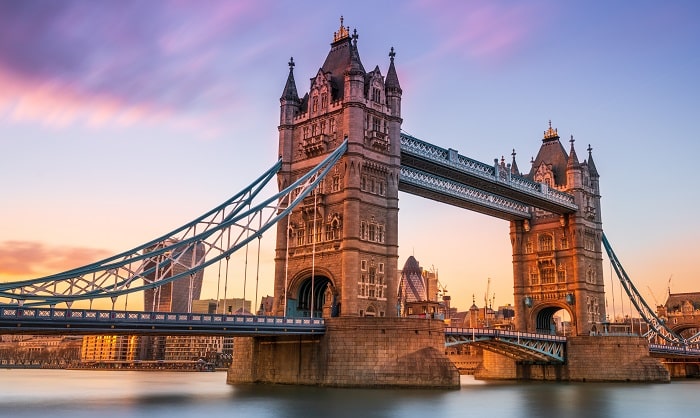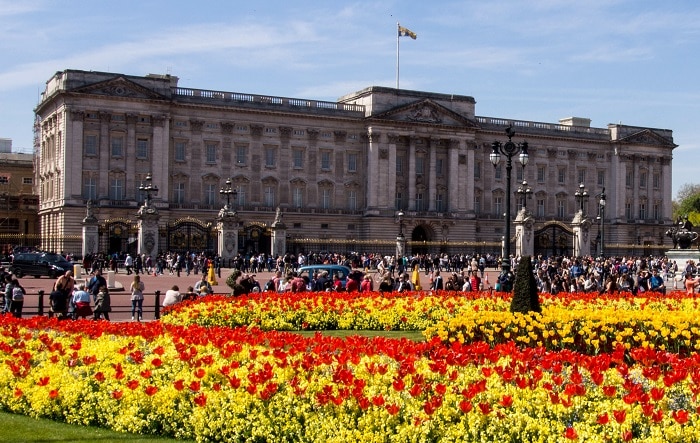1. What are the essential tools and materials needed for wallpaper hanging?
To hang wallpaper successfully, you’ll need a few essential tools and materials. A plumb line or level tool will ensure that your wallpaper is straight, while a smoothing brush or squeegee will help you eliminate bubbles and wrinkles. You’ll also need a sharp knife or scissors for trimming excess paper, as well as sandpaper for smoothing out rough spots on the wall. Adhesive is another essential item, which you can apply with a roller or brush. When it comes to materials, high-quality wallpaper that is easy to work with is key. Be sure to measure twice before cutting once, and cut from both ends when trimming excess paper. With these tools and materials in hand, you’ll be ready to tackle any wallpaper hanging project with confidence.
2. How can you prepare your walls before hanging wallpaper?
Prepare your walls before hanging wallpaper to ensure a smooth and long-lasting finish. Start by cleaning the walls thoroughly and filling in any cracks or holes with spackle. Sand down any rough spots and wipe away any dust or debris. Next, apply a coat of primer to create a smooth and even surface for the wallpaper adhesive to stick to. Allow the primer to dry completely before beginning the wallpaper installation process. It may also be helpful to mark out any electrical outlets or switches on the wall beforehand to ensure accurate placement of the wallpaper. Taking the time to properly prepare your walls will save you time and frustration in the long run, resulting in a beautiful and professional-looking finished product.
3. What are some common mistakes to avoid when hanging wallpaper?
To achieve a flawless wallpaper installation, it is important to avoid common mistakes. One of the biggest errors is failing to prepare the walls adequately. Clean and smooth walls are essential for a proper finish. Another mistake is not measuring the wall correctly, leading to a shortage of wallpaper or uneven pattern matching. Cutting wallpaper incorrectly can also result in wasted material and frustration. Applying too much adhesive or using a dull knife can cause bubbles, wrinkles, and tears during installation. Lastly, overworking seams can lead to unsightly gaps or overlaps. By avoiding these common mistakes, you can achieve a professional-looking wallpaper installation with ease.
4. How do you measure and cut wallpaper accurately?
To measure and cut wallpaper accurately, begin by measuring the height of your wall and adding a few extra inches to ensure you have enough paper. Cut your wallpaper into strips, making sure they match up with any patterns or designs. Use a plumb line or level tool to carefully align your first strip at one end of the wall. Smooth out any bubbles or wrinkles using a smoothing brush or squeegee tool as you go along. Trim off excess paper at the top and bottom using a sharp knife or scissors, leaving about an inch extra for overlap. Repeat this process for each subsequent strip until you reach the end of your wall, matching up patterns as needed. Remember to measure twice before cutting once and use proper tools such as snap-off blades instead of dull knives.
5. Can you explain the different types of wallpaper patterns available in the market today?
Wallpaper patterns come in an array of styles, including floral, geometric, textured, and striped designs. Some popular options include damask, toile, and paisley patterns. Grasscloth wallpaper is another option that provides a natural and textured look. There are also metallic wallpapers that add a touch of glamour to any room. When selecting a pattern, consider the size of the room and the furniture within it. Smaller patterns work best in smaller spaces, while larger patterns can create a bold statement in larger rooms. Additionally, pay attention to the color scheme of the pattern and how it complements other elements within the space. With so many options available on the market today, there is sure to be a wallpaper pattern that fits your unique style and decor preferences.
6. What is the best way to match patterned wallpapers when installing them on adjacent walls?
Matching patterned wallpapers on adjacent walls can be a daunting task for beginners. The key is to ensure that the patterns align seamlessly, creating a cohesive look. The best way to achieve this is by starting with the first strip on one wall and then moving onto the next wall, ensuring that the pattern matches up perfectly. Use a plumb line or level tool to ensure that each strip is straight and use a seam roller to press down on seams between strips for better adhesion. It’s essential to take your time and be patient during this process, as rushing can lead to mistakes. By following these steps, you can create a professional-looking finish that will impress your guests.
7. How do you hang a border or frieze paper correctly?
To hang a border or frieze paper correctly, start by measuring the length of your wall and cutting the paper to size. Next, apply adhesive to the back of the paper using a roller or brush. Carefully align the top edge of the paper with the ceiling line and smooth out any bubbles or wrinkles as you go along using a smoothing brush or squeegee tool. Trim off excess paper at the top and bottom using a sharp knife or scissors, leaving about an inch extra for overlap. Repeat this process for each subsequent strip until you reach the end of your wall, matching up patterns as needed. Use a seam roller to press down on seams between strips for better adhesion. Remember to take breaks often to avoid eye strain and wear gloves during installation. Contact Prestige Decorating London today for expert advice on hanging wallpaper and other interior decorating needs.
8. Is it possible to hang wallpaper over existing paper, and what precautions should be taken if doing so?
Hanging wallpaper over existing paper is possible, but certain precautions must be taken to ensure a successful installation. Firstly, inspect the surface area thoroughly to ensure it is smooth and free of any bumps or wrinkles. Next, use sandpaper to smooth out any rough spots before applying the new wallpaper. It’s also important to choose a high-quality wallpaper that is easy to work with and won’t tear easily. Additionally, make sure to measure twice before cutting once and cut from both ends when trimming excess paper. Finally, be mindful of pattern repeat when cutting strips and use caution around light switches and outlets. By following these precautions, you can successfully hang wallpaper over existing paper and achieve a beautiful finished result.
9. Can you provide tips for smoothing out bubbles or wrinkles during installation?
Smooth out bubbles and wrinkles during wallpaper installation using a smoothing brush or squeegee tool. Apply gentle pressure and work from the center of the strip outwards to remove any air pockets. Avoid using too much pressure, which can stretch or tear the paper. If bubbles persist, use a sharp blade to create a small incision and smooth out the air pocket. Remember to work slowly and carefully to avoid damaging the wallpaper.
10.What is the proper technique for trimming excess paper around outlets, switches, and corners?
Trimming excess wallpaper around outlets, switches, and corners requires precision and patience. Use a sharp knife or scissors to carefully cut away the excess paper, leaving about 1 inch for overlap. For outlets and switches, cut an X shape in the center of the paper and fold the flaps over before trimming. When trimming around corners, make small cuts at an angle to create a neat edge. Avoid using too much pressure to prevent tearing or stretching of the paper. Remember to take your time and double-check your measurements before cutting to ensure a clean finish.
11.How can Prestige Decorating London assist with your next project, from selecting high-quality materials to professional installation services?
Prestige Decorating London provides expert advice on all aspects of interior decorating, from selecting high-quality materials to professional installation services. Our team of experienced professionals can guide you through the entire process, ensuring that your project is completed to the highest standards. We offer a wide range of services, including wallpaper hanging, painting, and plastering, and we use only the best materials and tools to ensure that your project is completed to your satisfaction. Whether you are looking for a complete home renovation or just need help with a single room, Prestige Decorating London can help you achieve your goals. Contact us today to learn more about our services and how we can assist with your next project.
CTA:
Contact Prestige Decorating London today for expert advice on all things related to interior decorating!For professional advice on all aspects of interior decorating, contact Prestige Decorating London today. Our team of experts can assist you in selecting high-quality materials and provide professional installation services for your next project. With years of experience and a passion for excellence, we are committed to ensuring that your home or business looks its best. Don’t settle for anything less than the best when it comes to your interior decorating needs. Contact us today to learn more about how we can help you achieve the look you’ve always wanted.

